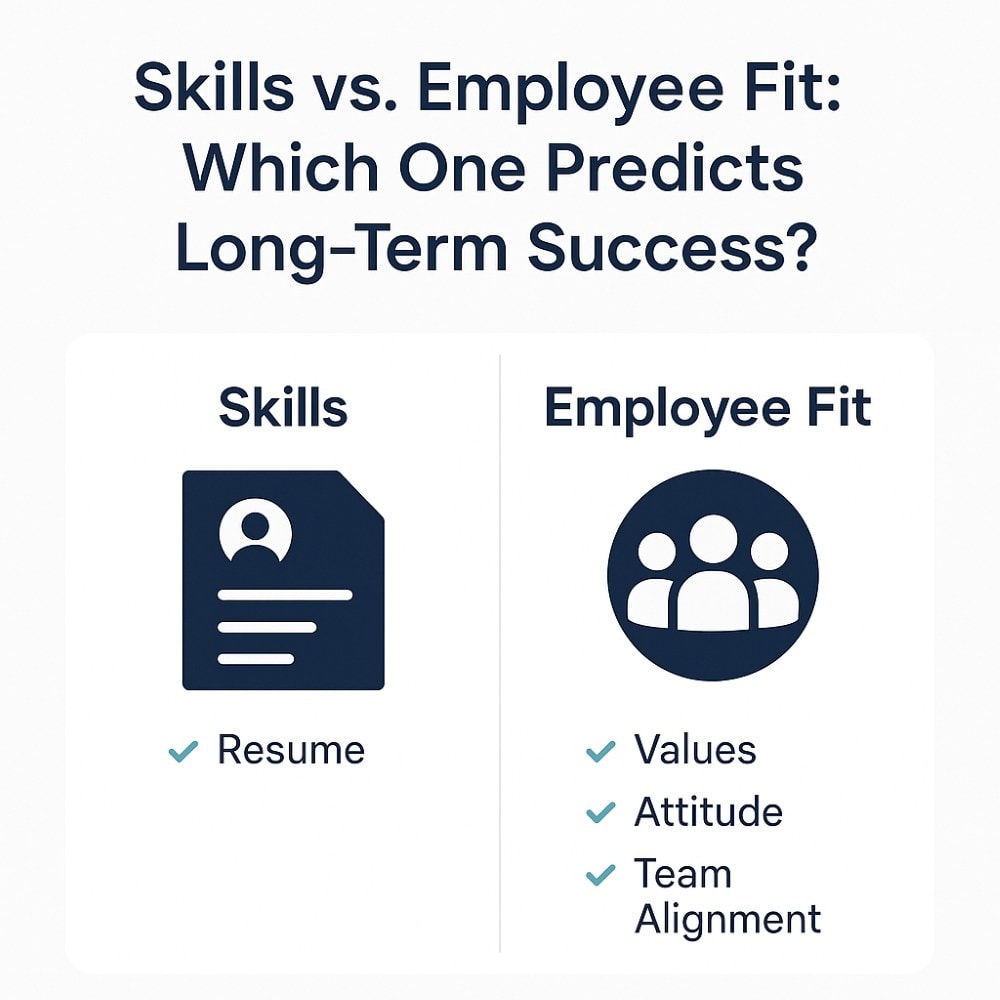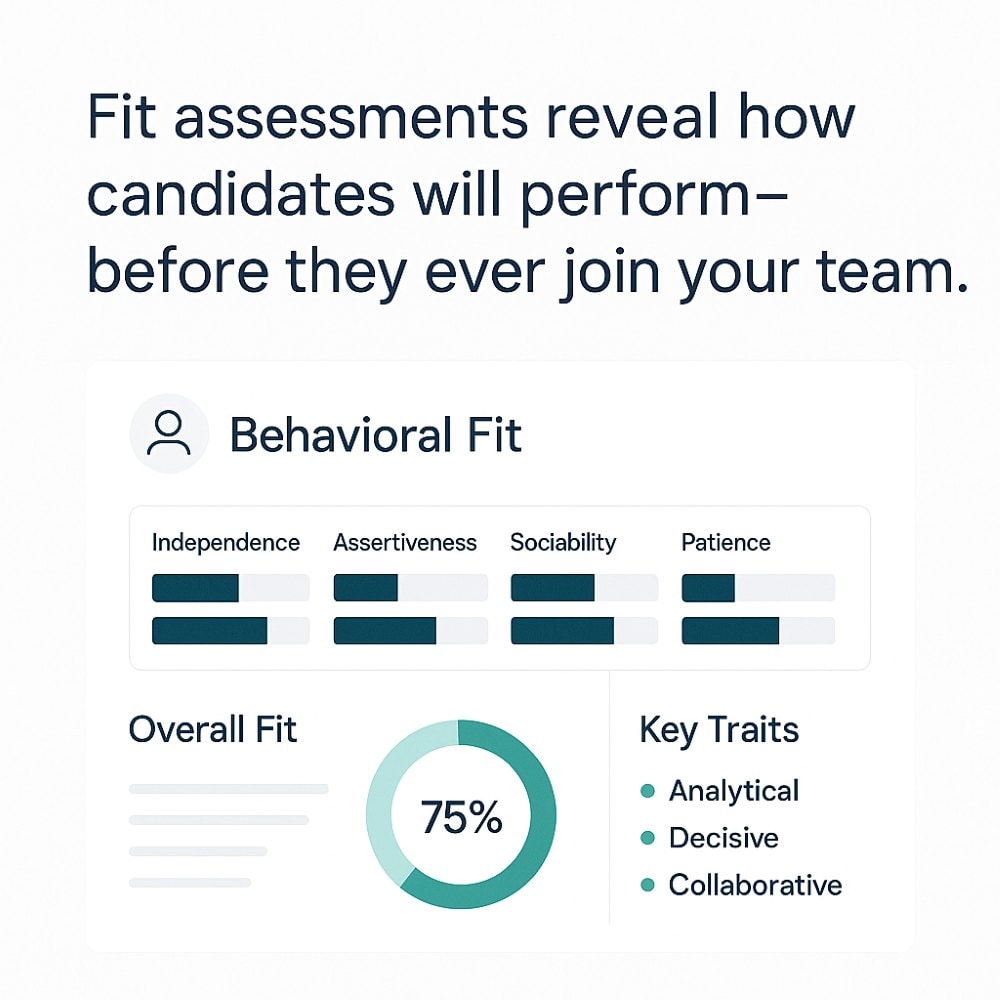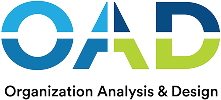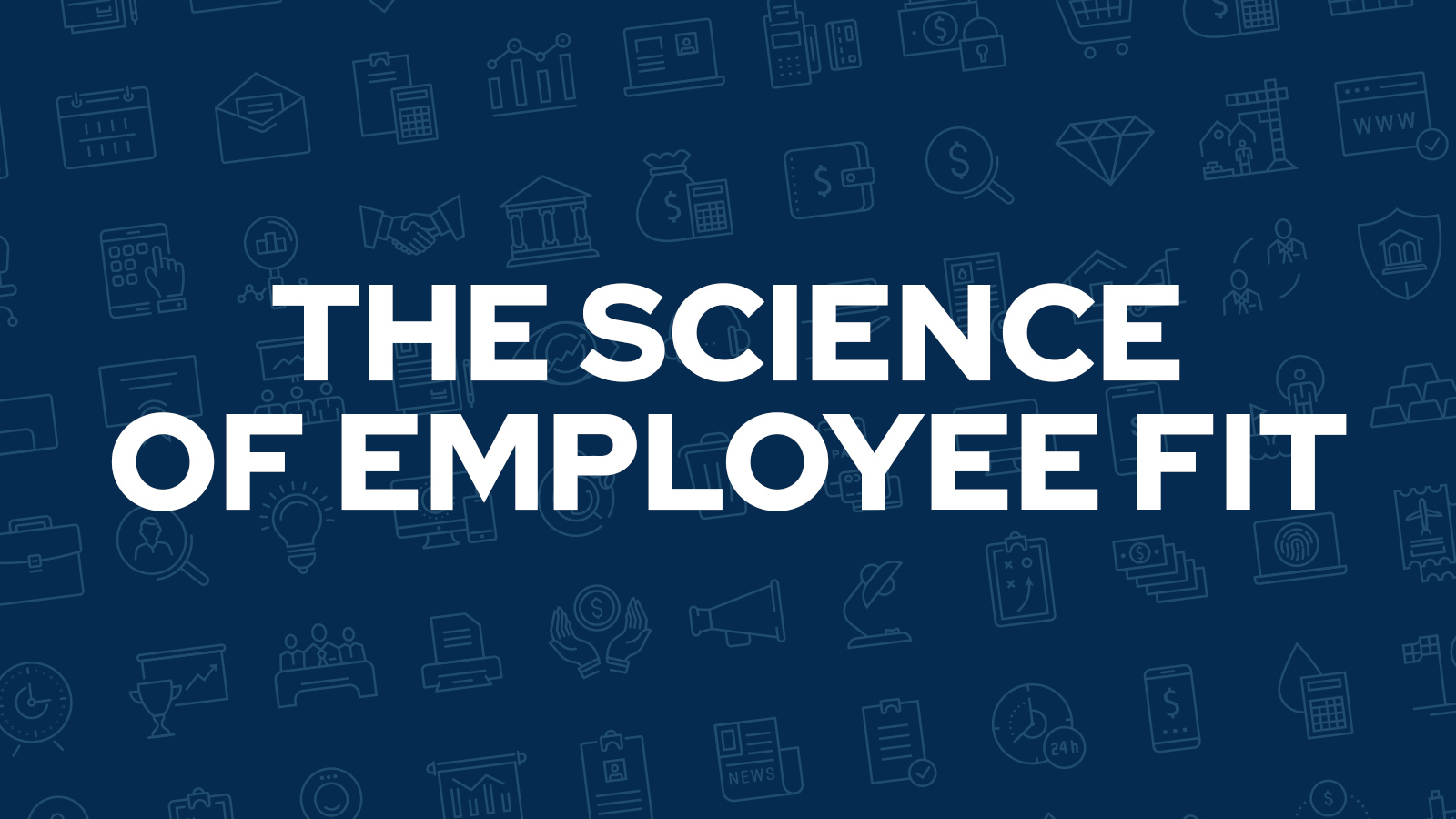Most hiring processes focus on skills, experience, and gut instinct. But without employee fit, even the best resumes can lead to bad hires. The smartest teams prioritize fit—because that’s what drives long-term success.
Table of Contents
- What Is Employee Fit—And Why Does It Matter?
- The Importance of Employee Alignment
- The Hidden Costs of Getting Fit Wrong
- How to Build Employee Fit Into Your Hiring Process
- Employee Fit Is a Long-Term Strategy, Not a One-Time Hire
- Final Thoughts – Hire for Fit, Backed by Data
What Is Employee Fit—And Why Does It Matter?
Employee fit refers to how well a person aligns with your company’s values, work style, and expectations—not just whether they meet the job requirements on paper. Employee fit directly impacts satisfaction and success in the workplace, influencing both individual and organizational outcomes. When fit is strong, employees thrive. When it’s off, even top talent underperforms.
Take Elon Musk, for example. His companies demand high adaptability, relentless problem-solving, and comfort with ambiguity. A brilliant engineer who prefers structure and predictability might not last long in that environment—not because they lack skill, but because they’re not a good match for the culture.
Research shows that poor fit is one of the top contributors to disengagement, burnout, and turnover. Employees who clash with their company’s values or struggle to align with the organization’s values often struggle to stay committed, contribute effectively, or remain engaged over time. Understanding an employee’s life circumstances and ensuring they receive adequate rest are also crucial for maintaining engagement and preventing burnout.
The takeaway? Hiring the right people means more than checking boxes—it means finding a professional relationship that works on every level, from both the employee’s and the organization’s perspective. That’s where employee fit becomes essential.

ChatGPT:
Great addition — this section is rich in keywords and conceptually aligned with the blog. To make it fit seamlessly, we’ll do three things:
- Retitle and reposition it logically in the blog flow
- Adjust the tone to match the rest of the article (slightly tighter, more executive-level)
- Eliminate redundancy by integrating it with our existing message about employee fit and cultural alignment
The Importance of Employee Alignment
Employee alignment is more than a buzzword—it’s the backbone of a high-performing organization. When people are aligned with your company culture, values, and job requirements, they don’t just show up—they contribute. They create momentum.
There’s a difference between meeting job qualifications and being the right fit for your work environment. The best employees align on multiple levels: personality traits, work style, motivation, and a deep connection to the company’s mission.
Studies consistently show that employees who feel aligned with their organization’s values are:
- More likely to stay engaged
- More motivated to contribute
- More committed over the long term
It’s not enough for hiring managers to focus on skills alone. As hiring becomes more competitive, alignment must become a core filter. The best teams are built on attitudes, values, and shared purpose—not just resumes.
That’s where behavioral data comes in. Using assessments to measure traits like communication style, adaptability, and cultural preferences helps identify the right people for the right roles. It ensures a match not just on qualifications, but on vision, values, and potential.
The upside? Aligned employees are more creative, collaborative, and loyal. The downside of poor alignment? Disengagement, lower productivity, and costly turnover.
In today’s market, employee alignment isn’t a nice-to-have—it’s a strategic edge. And when it’s done right, it shows: stronger teams, higher performance, and a culture that actually works.
The Hidden Costs of Getting Fit Wrong
Hiring someone who’s the wrong fit doesn’t just lead to awkward team dynamics—it gets expensive. Research from the U.S. Department of Labor estimates the cost of a bad hire can reach up to 30% of the employee’s first-year earnings. But that’s just the beginning.
When fit is off, you see the effects ripple across your organization:
- Projects slow down due to friction or miscommunication.
- Managers spend more time addressing performance issues.
- Morale drops as teams absorb the stress, and group cohesion suffers.
Warren Buffett once said, “It takes 20 years to build a reputation and five minutes to ruin it.” In the context of hiring, a poor cultural fit can erode trust within teams faster than most leaders expect. And it often leads to a revolving door—employees quit or quietly disengage. Commitment is often what distinguishes high performers and star employees from those who need improvement or realignment with organizational values.
On the flip side, great fit leads to stronger collaboration, lower turnover, and better business outcomes. Fit isn’t fluff—it’s a strategic, measurable factor that directly impacts your bottom line. Employee fit is also related to other factors, such as person-job and person-supervisor fit, which together shape overall workplace effectiveness.

How to Build Employee Fit Into Your Hiring Process
Hiring for fit isn’t about guesswork—it’s about designing a process that surfaces the right signals. When hiring employees, it’s crucial to select candidates who not only have the necessary skills but also fit well with your company culture and the specific role requirements. Employees who are hired without evaluating their fit can lead to costly mismatches and higher turnover. Here’s how to build employee fit into every stage of your hiring strategy.
Step 1: Define Your Company Culture First
Before evaluating candidates, clarify what kind of work environment they’re stepping into. Are you a fast-paced, metrics-driven startup? A collaborative, process-focused enterprise? Your company culture sets the baseline for what “fit” looks like.
Take Jeff Bezos, for example. Amazon’s leadership principles reward ownership, speed, and high standards. That’s not the right environment for someone who needs step-by-step guidance or a low-pressure pace. It doesn’t mean they’re a bad employee—it means the fit is off.
Articulating your organization’s values, work style, and team dynamics helps you attract candidates who are naturally aligned—and filter out those who aren’t. Identifying the characteristics of your top performers can further clarify what fit means for your team, making it easier to define and replicate success.
Step 2: Use Behavioral Interviews to Identify Fit Factors
Most interviews focus on what a candidate knows, but it’s equally important to assess their knowledge—such as skills, abilities, and relevant expertise—as well as behavioral traits for fit. Behavioral interviews uncover how they operate.
Instead of asking, “What’s your greatest strength?”, ask: **“Tell me about a time you faced a team conflict. How did you handle it?”**This kind of question reveals personality traits like emotional intelligence, communication style, and decision-making under pressure.
The goal is to observe alignment with your company’s core values—not just technical competence.
Step 3: Assess Fit Objectively with Science-Backed Tools
Gut instinct isn’t a hiring strategy. Tools like OAD’s fit assessments use validated behavioral science to evaluate how well a candidate will adapt to your team, expectations, and environment.
These aren’t personality quizzes—they’re evidence-based systems that measure motivation, communication, problem-solving styles, and more. It’s not about hiring clones. It’s about building a team with complementary strengths and shared values.
Executing effective fit assessments and making informed hiring decisions requires effort, but this investment leads to better outcomes.
Companies like Netflix and Google don’t just rely on resumes—they use data to predict performance. You should, too.

Step 4: Use Real-World Projects to Test Fit in Action
Resumes tell you what someone says they can do. A trial task shows you what they’ll actually do under pressure.
Ask candidates to complete a project or collaborate on a small assignment. You’ll see how they handle communication, ambiguity, and accountability. More importantly, you’ll learn whether they take ownership or wait for direction—critical traits that shape team success.
This doesn’t have to be elaborate. A two-hour task can reveal more than a two-page resume.
Step 5: Reinforce Fit Through Onboarding and Beyond
Once the right person joins your team, don’t stop there. The onboarding process should reinforce cultural fit through mentorship, clarity of expectations, and direct connection to your company’s mission.
Employees decide in their first weeks whether they’ve made the right choice. Make those first weeks count.
Employee Fit Is a Long-Term Strategy, Not a One-Time Hire
Hiring someone who fits isn’t the finish line—it’s the foundation. Fit influences how people grow, lead, and stay aligned with your company’s direction over time. Assessing employee-manager fit also supports career development and helps employees build successful long-term careers within the organization.
Let’s say two candidates have the same credentials. One aligns naturally with your team’s pace, communication style, and values. The other doesn’t. Matching employees to the right jobs is key for job satisfaction and retention. Six months in, the first is thriving—collaborating, problem-solving, and stepping up. The second? Burned out, disengaged, or already gone.
That’s the difference fit makes.
Companies like Zappos and Patagonia are famous for hiring based on cultural alignment. Why? Because it’s the glue that holds teams together—and fuels long-term innovation and performance. Employee fit is also vital for the organization’s long-term success and its contribution to the broader community.
Fit drives:
- Retention – Employees who feel aligned stay longer.
- Engagement – Aligned employees are more likely to go above and beyond.
- Adaptability – A good match means faster learning and better change management.
Skills can be trained. Fit, on the other hand, must be assessed, nurtured, and protected.
Final Thoughts – Hire for Fit, Backed by Data
When you prioritize employee fit, you’re not just improving your hiring process—you’re protecting your culture, your bottom line, and your long-term success.
Forget the myth that culture fit is intangible. With the right tools, fit is something you can measure, predict, and optimize. That’s where OAD’s science-backed assessments make the difference. They give hiring managers the data they need to make confident decisions—before a single offer is made.
If you’re ready to build a team that doesn’t just perform—but thrives together—
try it for free now and see how OAD helps you hire the right people, faster.

